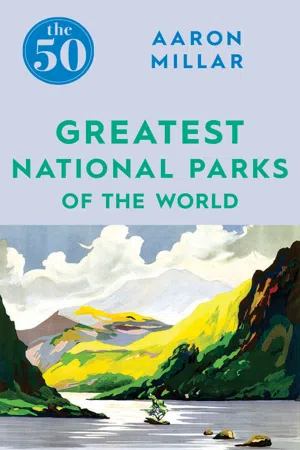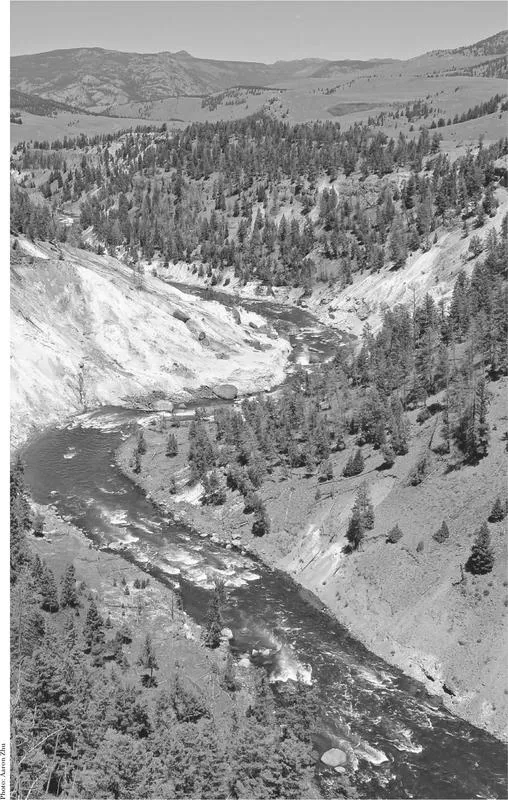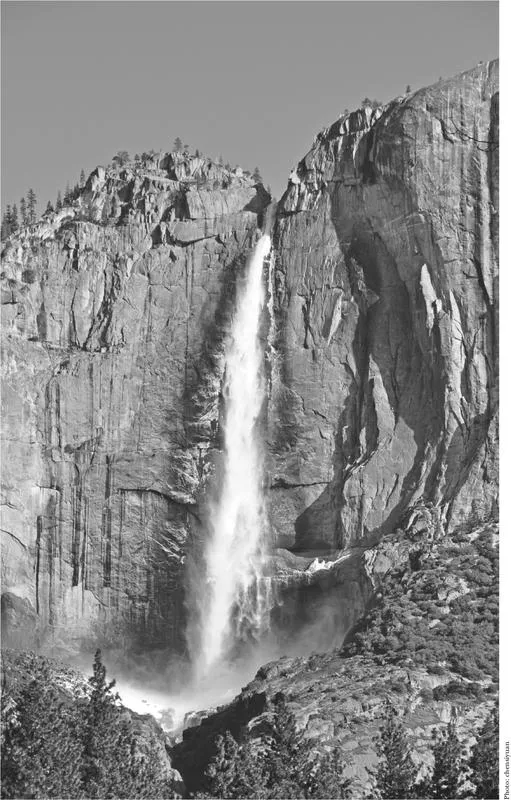
This is a test
- 304 pages
- English
- ePUB (mobile friendly)
- Available on iOS & Android
eBook - ePub
The 50 Greatest National Parks of the World
Book details
Book preview
Table of contents
Citations
About This Book
Olympus, the Grand
Canyon, Uluru and the Serengeti: national parks are home to the wonders of our
natural world.Award-winning travel writer Aaron Millar explores the greatest national parks
of the world, giving insider tips on how best to discover their secrets.From the home of the
highest waterfall in the world in Canaima, Venezuela to the beautiful fjords of
Hardangervidda, Norway, to searching for the giant panda in Jiuzhaigou, China
and exploring the culture in Cinque Terre, Italy, this guide tells of the
history, legends and cultures of each great national park, and tells you how to
see them at their awe-inspiring best.
Frequently asked questions
At the moment all of our mobile-responsive ePub books are available to download via the app. Most of our PDFs are also available to download and we're working on making the final remaining ones downloadable now. Learn more here.
Both plans give you full access to the library and all of Perlego’s features. The only differences are the price and subscription period: With the annual plan you’ll save around 30% compared to 12 months on the monthly plan.
We are an online textbook subscription service, where you can get access to an entire online library for less than the price of a single book per month. With over 1 million books across 1000+ topics, we’ve got you covered! Learn more here.
Look out for the read-aloud symbol on your next book to see if you can listen to it. The read-aloud tool reads text aloud for you, highlighting the text as it is being read. You can pause it, speed it up and slow it down. Learn more here.
Yes, you can access The 50 Greatest National Parks of the World by Aaron Millar in PDF and/or ePUB format, as well as other popular books in Desarrollo personal & Viajes. We have over one million books available in our catalogue for you to explore.
Information
Topic
Desarrollo personalSubtopic
ViajesNORTH AMERICA
YELLOWSTONE NATIONAL PARK, WYOMING, MONTANA AND IDAHO
The American painter Anne Coe called Yellowstone ‘the place where the centre of the Earth finds an exit and gives us a glimpse of its soul.’ Bubbling hot springs and super-heated geysers explode hundreds of feet into the air; the ground shakes and hisses; there are boiling pools of pure sapphire and thermal jets etched in rainbows of red, yellow and green. Yellowstone is fire and violence, a primeval landscape unlike anywhere else on Earth.
Established in 1872, it is also the world’s first national park and the start of a conservation movement that has now spread to thousands of protected areas around the globe. Europeans discovered it through fur trappers and mountain men, who travelled into the vast reaches of the American wilderness in the early 19th century in search of beaver pelts and furs to trade. They returned with tall tales of a magical landscape where the Earth boiled and jets of scalding water exploded from the ground. Expeditions followed: the Folsom–Cook trip of 1869, the first organised exploration of the region, called it a ‘masterpiece of nature’s handiwork’; and the Hayden expedition of 1871, who returned with photographs and drawings that convinced Congress to sign its protection into law.
Today it is home to the largest active geyser basin on the planet: some 10,000 hydrothermal features, the highest concentration on earth, including close to 500 individual geysers, roughly half the world’s total. Old Faithful is the star, a giant plume of white water that explodes up to 180 feet in the air. But its fame rests on its reliability, erupting like clockwork every 90 minutes or so. Giant Geyser is bigger, reaching 250 feet, but hard to predict; Steamboat Geyser holds the world record for the tallest on Earth, but you may wait 50 years to see it.

The real wonder of Yellowstone, however, is not one single feature, but the basin as a whole. There are geysers shaped like castle turrets, others like beehives or fountains, even one that looks like a lion’s head, steam pouring out as it roars. Some scream suddenly, like rockets shooting in the air, others build slowly, bubbling like a witch’s brew. There are mud pots the colour of cinnamon and scalding pools edged in slicks of amber and green, like a watercolour painting.
Nearby to the main geyser basin is the Grand Prismatic Spring, the largest hot spring in the United States at 370 feet across, ringed in rainbows of orange, yellow and green, with bright turquoise water in the centre, like the blue eye of a giant peering up from the bowels of the Earth. Fifty miles away, in the far north of the park, are the Mammoth Hot Springs: natural travertine sculptures formed from mineral-rich water pumped up through cracks in the Earth that solidify into ever-changing forms, dripping down the hillside like an enormous abstract art installation.
The aesthetics are spectacular, but what’s truly mind-blowing is that each of these thermal features are alive. Microscopic bacteria and algae, called thermophiles, exist in these extreme conditions, creating vibrant strips of colour as they feed in distinct bands of heat – blue for archaea, which lives at 199 degrees Fahrenheit; yellow for bacteria at 166 degrees Fahrenheit; green, algae at 140 degrees Fahrenheit; orange, protozoa at 133 degrees Fahrenheit. They are among the least understood organisms on Earth, but they are involved with some of the most cutting-edge science of our time, including breakthroughs in DNA sequencing and the fight against AIDS, Ebola and other diseases. They’re even involved in the search for extraterrestrial life. By comparing the fossil records of thermophiles found in the park with rocks brought back from Mars, NASA is hoping to one day prove definitively that we are not alone – far from little green men, it turns out that the aliens may look a lot like the geyser basin of Yellowstone National Park.
But there’s another experiment happening here too and, arguably, it’s the most important of all. At the turn of the 20th century wolves had been hunted to near extinction across the United States. In Yellowstone, the last one was killed in 1926. But now they’re back, having been reintroduced to the park in 1995, and the effect they’re having is nothing short of miraculous.
The problem was the elk. Without their top predator, they had run riot, reducing the vegetation, in many areas, to wasteland. This had a knock-on effect across the entire ecosystem, suppressing the growth of forests, plant-life and destroying key habitats. The thought was that humans could intervene and cull the herds to manageable levels. But despite their best efforts, Yellowstone was slowly dying.
When the wolves were reintroduced, just 41 in total, the effect was immediate. They killed some elk, of course, but more importantly they changed the behaviour of the herds – something that humans simply couldn’t do. The elk stopped grazing in places they knew they would be vulnerable. As they did so, those places immediately started to flourish again: barren valleys became forests, songbirds returned, the rivers thrived with fish and beaver. In the ecological blink of an eye the entire ecosystem was transformed.
It is, perhaps, the most striking example we have of a concept called ‘rewilding’ and it’s revolutionizing how we approach conservation around the world. Rather than maintain an ecosystem through human intervention, the wolves of Yellowstone remind us to just let go.
That’s what makes Yellowstone great: it is more than a window into the inner workings of the world, more than a glimpse of the Earth’s soul; it is, perhaps, a spark of hope too, a landscape as wild as the wolves; a primeval world unlike anywhere else on Earth.
WHERE: Wyoming, Montana and Idaho. There are numerous gateway towns, depending on where you’re coming from. See website for details: www.nps.gov/grte
DON’T MISS: The Boiling River. Close to the Mammoth Hot Springs, near the north entrance, is the most extreme natural hot tub in the world: underground springs pipe steaming hot mineral-rich water directly into the Yellowstone River, creating warm eddies surrounded on all sides by freezing rapids and icy flow.
TOP TIP: Avoid the crowds of summer and come in May for calving season; September and October for the elk rut; or December to February to have the magic of the thermal world all to yourself.
WHILE YOU’RE THERE: Grand Teton National Park is just a few miles south of Yellowstone and home to the ‘mountains of the imagination’ as they’re known locally – one of the most photogenic ranges in the world, as well as pristine alpine lakes, magnificent wildlife and over 200 miles of hiking trails: www.nps.gov/grte
YOSEMITE NATIONAL PARK, CALIFORNIA
In 1903, President Roosevelt spent three days camping in the backcountry of Yosemite, with the legendary naturalist and environmental campaigner, John Muir. He described the experience as ‘… like lying in a great solemn cathedral, far vaster and more beautiful than any built by the hand of man.’ Yosemite has that effect on you. There is something intangible, almost spiritual, in the harmony of natural elements, as if the Earth here, among the smooth granite peaks of the High Sierra, the lush pine forests and waterfalls that plummet thousands of feet to the valley floor, had finally carved its masterpiece, the perfect balance of colour, light and form.
It is not the first national park (that honour belongs to Yellowstone), but it is, arguably, more fundamental. Yosemite is the first protected wilderness area in the country, signed into law in 1864 by President Abraham Lincoln. Up until that point the wilderness was seen solely as a resource for human exploitation. That wild lands should remain untouched and not subject to the dominion of man was a revolutionary concept. But it spread. Today, Yosemite is widely credited with inspiring America’s national park movement, which has since expanded to thousands of protected parks and reserves around the globe.
One man in particular is to thank. John Muir first visited Yosemite in 1868, at the age of 30, returning the next year to work as a ranch hand and then a shepherd’s assistant, guiding a flock of 2,000 sheep through the foothills of the Sierra Nevada Mountains. It was an experience that changed him fundamentally. A deeply religious man, he found in the rocks and streams of Yosemite a connection to God that was more profound than any he had experienced before. Being in nature, for Muir, became akin to communing with the divine. ‘In God’s wildness lies the hope of the world,’ he wrote. ‘No temple made with hands can compare with Yosemite.’

He would spend the rest of his life campaigning for the protection of Yosemite, and other wild lands, and was instrumental in establishing it as a national park. Muir envisioned a place where ‘thousands of tired, nerve-shaken, over-civilised people [would begin to find out] that going to the mountains is going home; that wildness is a necessity.’ And that’s exactly what Yosemite has become: a sanctuary, an escape, a cathedral of light and stone.
There are many highlights. Yosemite Valley is the central hub, ‘a glitter of green and golden wonder’, as the great photographer Ansel Adams, who made his name photographing these landscapes, described it. On the north side of the valley is El Capitan, a 3,000-foot vertical face that has taunted and mesmerised the world’s greatest climbers for over 50 years. In the far west is the cracked edifice of Half Dome, one of the most iconic peaks on the planet, and Glacier Point, one of the most spectacular views in the country, the sparkling granite of the high country rolling endlessly to the horizon.
Then there are the waterfalls. Niagara may be the country’s largest by volume, but Yosemite Falls is thirteen times as tall, a magnificent series of three cascades that plummet 2,425 feet from the high country to the valley floor – almost twice the height of the Empire State Building in total. Nearby is Ribbon Falls, the longest single vertical drop in North America at 1,600 feet, covering the ground in misty rainbows and the thunder of its crash; and Sentinel Falls, a 2,000-foot silver ribbon of snow-melt, like an enormous waterslide. But, perhaps most special of all is Horsetail Falls, in the north of the valley. For most of the year, it’s nothing more than a trickle but in late February the last embers of the setting sun reflect off its water, transforming the cascade into a river of falling fire – one of the most unique natural phenomena in the country.
But the real magic of Yosemite is in the backcountry. It is thought that 95 per cent of visitors cram themselves into less than 5 per cent of the park – and most will never hike further than a mile from their car. But away from those crowds there is a wilderness filled with nothing but silence and the glittering vastness of the mountains. Out here, it’s still possible to find something of that connection Muir held so dear, in the wildflowers that spring from lightning-burnt forests, the granite peaks that rise from the valley like giant stone totems, the glacier lakes that reflect the sunrise in mirror perfection.
John Muir said: ‘There is a love of wild nature in everybody, an ancient mother-love ever showing itself whether recognised or no, and however covered by cares and duties.’ Yosemite washes those cares away. Here, in this vast cathedral of stone, this masterpiece of light and form, we are reminded that nature is not a thing outside of us, but an essential part within. Wildness is not a luxury, it’s a necessity. Like Muir said: ‘going to the mountains is going home.’
WHERE: Mariposa County, California, four hours west of San Francisco. There are numerous gateway towns, depending on where you enter. See website for further details: www.nps.gov/yose
DON’T MISS: The High Sierra Loop: A spectacular 49-mile backcountry trail that traverses many of the same paths that John Muir walked his first summer in the Sierras. The trail is interspersed by five historic camps, each about ten miles apart, offering proper beds, heated cabins and home-cooked meals – the business class of backpacking. But it’s popular – accommodation is provided on a lottery basis. Apply early: www.yosemitepark.com/high-sierra-camp-how-to-apply.aspx
TOP TIP: Come in May and June to see the waterfalls at their most spectacular. Lake Tenaya, in the north of the park, near Tuolumne Meadows, is the best lake for swimming and has one of America’s most beautiful, and undiscovered, beaches.
WHILE YOU’RE THERE: Visit Sequoia and Kings Canyon National Park, three hours south – home of General Sherman, the 2.7-million-pound, 275-foot-tall largest tree on Earth: www.nps.gov/seki
GRAND CANYON NATIONAL PARK, ARIZONA
Two hundred and seventy seven miles long, eighteen miles wide at its peak and with up to 6,000 feet from its tip to the valley floor, the Grand Canyon may not be the largest canyon in the world – Peru’s Colca Canyon is almost twice as deep and Tibet’s Yarlung Zangbo Grand Canyon is 35 miles longer and 12,000 feet taller – but it is, surely, the most spectacular: a kaleidoscopic gorge of the Colorado River filled with amber spires, golden buttes and sheer red rock cliffs that glow at sunset like embers from a fire. The poet Harriet Monroe called it ‘the abode of gods’, and so it is. A land too humbling to be real; on a clear day you can see for...
Table of contents
- Cover
- TITLE PAGE
- DEDICATION
- CONTENTS
- INTRODUCTION
- NORTH AMERICA
- SOUTH AMERICA
- EUROPE
- AFRICA
- ASIA
- OCEANIA
- ALSO AVAILABLE
- ABOUT THE AUTHOR
- COPYRIGHT